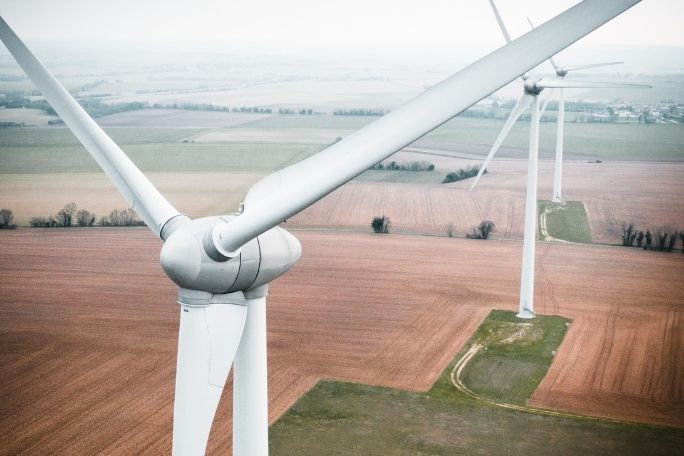Lesson summary
Students explore the topic of wind and wind energy. They begin by brainstorming ‘windy’ words, illustrate these words and use them in sentences. They look at using wind to create electricity, first watching a clip of a wind farm and then making their own wind turbine.
Learning intentions:
Students will...
- understand that we can use wind to create energy and electricity
- recognise words and text relating to wind and weather.
Lesson guides and printables
Lesson details
Curriculum Mapping
Australian curriculum content descriptions:
Foundation English:
- Use interaction skills including listening while others speak, using appropriate voice levels, articulation and body language, gestures and eye contact (ACELY1784)
- Create short texts to explore, record and report ideas and events using familiar words and beginning writing knowledge (ACELY1651)
Year 1 English:
- Engage in conversations and discussions, using active listening behaviours, showing interest, and contributing ideas, information and questions (ACELY1656)
- Create short imaginative and informative texts that show emerging use of appropriate text structure, sentence-level grammar, word choice, spelling, punctuation and appropriate multimodal elements, for example illustrations and diagrams (ACELY1661)
Year 2 English:
- Create short imaginative, informative and persuasive texts using growing knowledge of text structures and language features for familiar and some less familiar audiences, selecting print and multimodal elements appropriate to the audience and purpose (ACELY1671)
Foundation and Years 1 & 2 Design and Technologies:
- Identify how people design and produce familiar products, services and environments and consider sustainability to meet personal and local community needs (ACTDEK001)
- Explore how technologies use forces to create movement in products (ACTDEK002)
- Visualise, generate, develop and communicate design ideas through describing, drawing and modelling (ACTDEP006)
Syllabus outcomes: ENe-1A, ENe-2A, EN1-1A, EN1-2A, STe-10ME, ST1-14BE, ST1-15I, ST1-16P, STe-6NE, ST1-7PW, STe-5WT, ST1-5WT.
Time required: 60 mins
Level of teacher scaffolding: High – oversee activity, facilitate discussion and assist students in creating wind turbines.
Resources required
- Hydro Tasmania’s Wind Turbine Template
- Scissors
- Sticky tape
Additional info
This lesson has been developed in partnership with
Hydro Tasmania.
Hydro Tasmania has been at the forefront of clean energy innovation for one hundred years. It is Australia’s largest producer of clean energy – generating hydro and wind power – and the largest water manager. Hydro Tasmania has 55 major dams, operates 30 hydropower stations and has built some of Australia’s largest wind farms.
Hydro Tasmania also sells energy in the National Electricity Market through its retail business Momentum Energy, and sells its expertise internationally through its consulting business Entura.
Visit the Hydro Tasmania website to learn how the business is working towards Australia’s clean energy future.


Welcome back!
Don't have an account yet?
Log in with:
By signing up to Cool.org you consent and agree to Cool's privacy policy to
store, manage and process your personal information. To read more, please see
our privacy policy here(Opens in new tab).
Create your free Cool.org account.
Many of our resources are free, with an option to upgrade to Cool+ for premium content.
Already have an account?
Sign up with:
By signing up to Cool.org you consent and agree to Cool's privacy policy to
store, manage and process your personal information. To read more, please see
our privacy policy here(Opens in new tab).